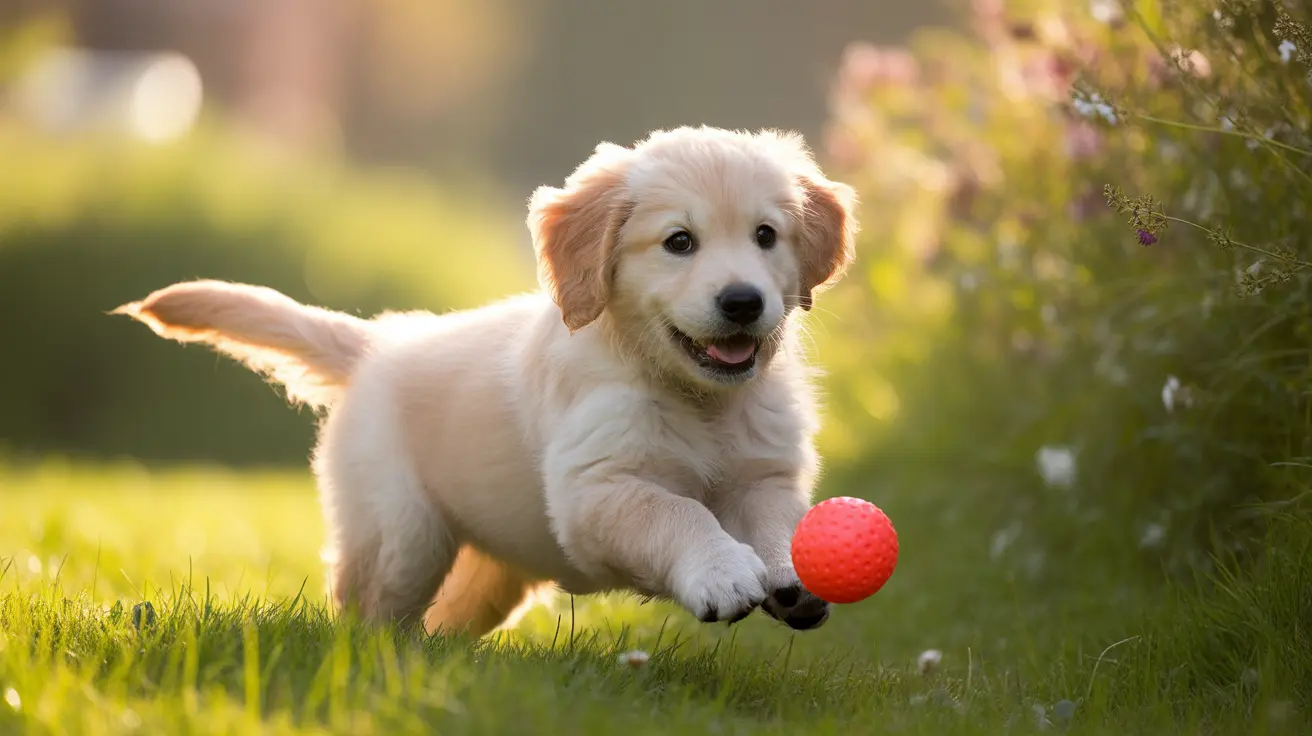Golden Retrievers are beloved for their stunning coats, which come in a fascinating range of colors from cream to rich mahogany. Whether you're a prospective owner, breeder, or simply an admirer of these magnificent dogs, understanding the variety and genetics behind Golden Retriever colors can help you appreciate these beautiful canines even more.
In this comprehensive guide, we'll explore the officially recognized colors, the genetics behind these variations, and what you need to know about Golden Retriever coat colors throughout their life stages.
Official Golden Retriever Color Classifications
The American Kennel Club (AKC) officially recognizes three main color categories for Golden Retrievers:
- Light Golden: Ranging from cream to light gold
- Golden: The classic, medium gold shade
- Dark Golden: Deep, rich golden to fox-red hues
While these are the official classifications, the actual range of colors you might see in Golden Retrievers is quite diverse, reflecting the complex genetics behind their coat coloration.
Understanding Golden Retriever Coat Genetics
The distinctive golden color of these dogs is primarily determined by a specific genetic makeup. All purebred Golden Retrievers carry what's known as a double recessive gene (e/e) at the MC1R locus, which prevents black pigment production in their coat.
This genetic configuration results in the production of pheomelanin, the pigment responsible for the yellow-to-red spectrum of colors we see in Golden Retrievers. The intensity of this pigment can vary significantly, leading to the different shades we observe.
Puppy Color Development and Changes
Many Golden Retriever puppies are born with significantly lighter coats than their adult color. This often surprises new owners who might expect their puppy's color to remain constant. The transformation typically occurs over the first year of life, with the most dramatic changes happening between 3-9 months.
Adult coat color usually settles by the first birthday, though subtle changes may continue throughout the dog's life. This natural progression is part of what makes each Golden Retriever unique.
Show Standards and Color Acceptance
While Golden Retrievers come in various shades, not all colors are accepted in show rings. The breed standard specifically excludes extremely pale (white) coats and very dark mahogany shades. This doesn't make these colors any less beautiful or the dogs any less valuable as companions, but it's important information for those interested in show dogs.
The preferred show colors typically fall within the middle range of the spectrum, featuring rich, lustrous golden shades that the breed is famous for.
Maintenance and Care Considerations
Regardless of coat color, all Golden Retrievers require regular grooming to maintain their beautiful coats. However, lighter-colored Goldens may show dirt more easily, while darker-colored dogs might show sun bleaching more noticeably during summer months.
Regular brushing, proper nutrition, and good overall health care will help maintain the vibrancy of your Golden's coat, regardless of its specific shade.
Frequently Asked Questions
What are the officially recognized coat colors of Golden Retrievers according to kennel clubs?
The AKC officially recognizes three colors: light golden, golden, and dark golden. These categories encompass various shades from cream to rich gold, though extremely pale or very dark colors may not be accepted in show rings.
How do genetics influence the different shades of Golden Retriever coats?
Golden Retriever coat colors are determined by specific genes, particularly the MC1R gene (E locus). All purebred Goldens have a double recessive gene configuration that produces varying levels of pheomelanin, resulting in different golden shades.
Why do Golden Retriever puppies' coat colors change as they grow?
Puppies typically start with lighter coats that darken and develop their true color during their first year of life. This change is part of their natural development process, with the most significant changes occurring between 3-9 months of age.
Are rare colors like mahogany or fox-red accepted in Golden Retriever dog shows?
While fox-red Goldens may be accepted in some shows, extremely dark mahogany shades typically aren't accepted in major show rings. However, these colors are perfectly fine for companion dogs.
Can the coat color of a Golden Retriever affect its shedding or health?
No, coat color doesn't affect a Golden Retriever's health or amount of shedding. All Golden Retrievers shed seasonally and require regular grooming, regardless of their coat color.
Understanding Golden Retriever colors goes beyond mere aesthetics - it's a fascinating journey into genetics, breed standards, and the natural variation within this beloved breed. Whether you choose a light golden puppy or a darker-coated adult, remember that all Golden Retrievers share the same loving, friendly temperament that makes them such wonderful companions.






